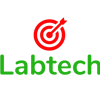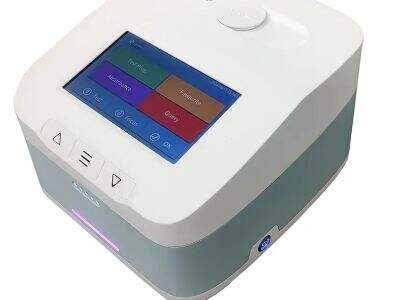How to Calibrate Water Quality Analyzers with Labtech
Understanding the Importance of Calibration:
Water quality analysis is a useful method to gauge the purity and safety of water. Calibration is an important step to verify the measurement accuracy of these analyzers. If the analyzer is not calibrated properly, readings will be inaccurate.
Step by Step Instructions for Water Sampling Analyzers:
Calibrating a water quality innstrument may sound intimidating but there are some easy steps and tools you can use. Here is a simple step-by-step guide to calibrate a water quality analyzer:
Prepare the calibration set: You’ll want to have the proper calibration solutions on hand before you begin the calibration process. Those solutions are for calibrating the parameters on a water quality analyzer.
Clean the analyzer: The water quality analyzer is clean and residue free before you run the calibration process. This would avoid any fallout from the calibration results.
Analyzer Preparation: a) Conditioning the analyzer per the manufacturer's recommendations Prepare the water quality analyzer for calibration according to the manufacturer´s instructions. This can involve powering up the device and entering calibration.
Calibrate the probes: Calibrate each probe on the water quality analyzer with the calibration solutions. Follow the manufacturers guidelines above in Table 9 for each sensor.
Check Your Results: When your calibration process is finished, check your results to be assure your analyzer is delivering reliable measurements. Make necessary corrections in case the readings are out of the expected values.
Tips on achieving an accurate calibration;
Here are some guidelines to keep in mind in order to get consistent calibration results:
Record the calibration testing: Record every calibration, with details consisting of date, time and the outcome. It will be used to monitor the long term stability of the Water quality analyzer.
Calibration on a regular basis: Make sure that you calibrate the water quality analyzer on a regular basis to receive accurate readings. Calibration cycle will differ, depending on how you use the instrument and on your field conditions.
Be error free: Be vigilant during calibration whether there is any mistakes or discrepancies in the readings or not. Take care of these problems at once to avoid the inaccuracy of the results.
Common Pitfalls when Calibrating a Water Quality Analyzer:
Here are errors to avoid when calibrating a water quality analyzer:
Omitting cleaning step: Not cleaning the Water quality analyzer before the calibration can cause wrong results. Ensure the analyzer is clean prior to calibrating the analyzer.
Expired calibration buffers:Calibration values are only as accurate as the buffer solution that we calibrate with. Be sure to verify the expiration date of the solutions before using.
Failure to follow the manufacturer's instructions: There is a calibration method unique to each instrument depending on the manufacturer; however, emulations of the calibration procedure are generally included. The best way to make sure your device is accurately calibrated is to adhere closely to these instructions.
Zero-backlash straining Screw requires no adjusting to compensate for wear.
Maintenance of the Water quality analyzer Besides regular calibration it is very important to carry out regular maintenance, so that reliable measurements are obtained. This may involve cleaning the analyzer, changing consumable parts, and where necessary recalibrating the sensors. By doing so you can make the most out of your water quality analyzer for long years to come.
 EN
EN
 AR
AR BG
BG CS
CS DA
DA NL
NL FR
FR DE
DE EL
EL HI
HI IT
IT JA
JA KO
KO PL
PL PT
PT RO
RO RU
RU ES
ES SV
SV CA
CA TL
TL IW
IW ID
ID SR
SR SK
SK VI
VI ET
ET HU
HU TH
TH TR
TR FA
FA AF
AF MS
MS GA
GA MK
MK BN
BN BS
BS LA
LA MN
MN NE
NE

